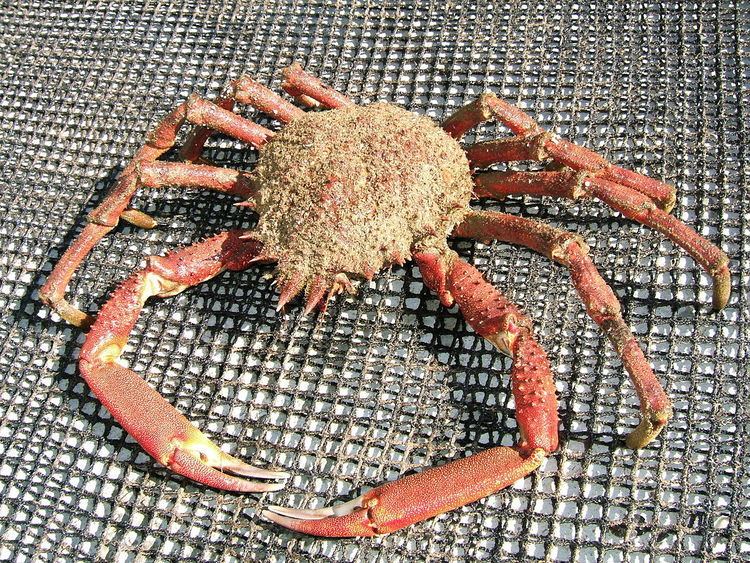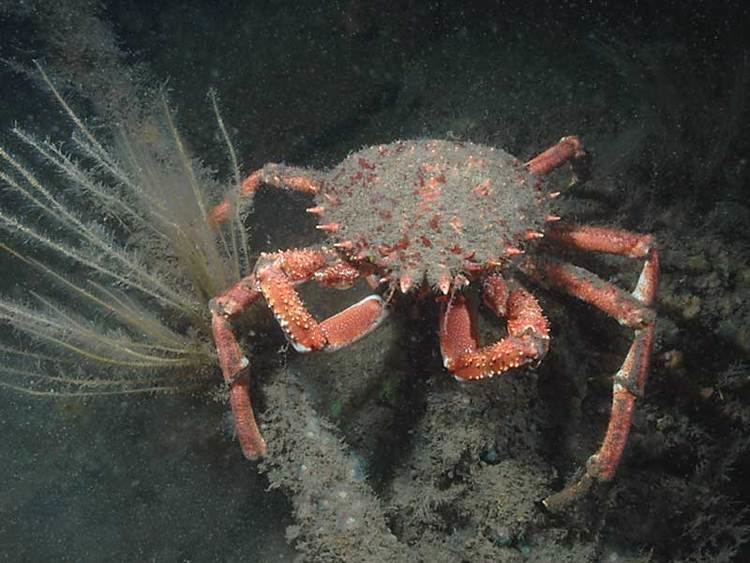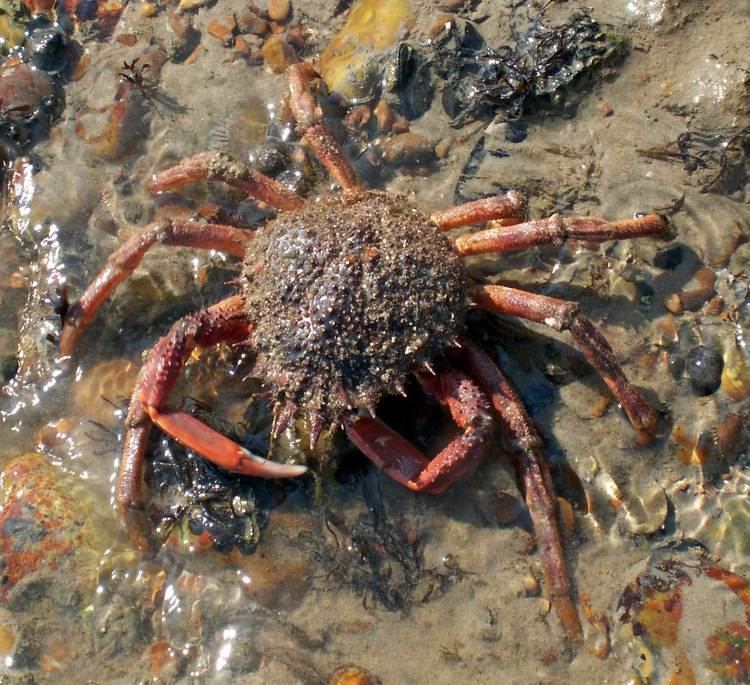Scientific name Maja squinado Higher classification Maja | Subphylum Crustacea Infraorder Brachyura Genus Maja Rank Species | |
 | ||
Similar Cancer pagurus, Homarus gammarus, Velvet crab, Pollicipes pollicipes, Crab | ||
Maja squinado
Maja squinado (the European spider crab, spiny spider crab or spinous spider crab) is a species of migratory crab found in the north-east Atlantic and the Mediterranean Sea.
Contents

Spiny spider crab maja squinado
Diet
M. squinado feeds on a great variety of organisms, with seaweeds and molluscs dominating in winter, and echinoderms such as sea urchins and sea cucumbers in summer.
Behaviour
Migrations generally take place in autumn, with some crabs covering over 100 miles (160 km) in eight months. All crabs are vulnerable to predation when moulting, and M. squinado becomes gregarious around that time, presumably for defense against predators. Females can produce up to four broods per year.
Fishery

M. squinado is the subject of commercial fishery, with over 5,000 tonnes caught annually, more than 70% of it off the coast of France, over 10% off the coast of the United Kingdom, 6% from the Channel Islands, 3% from each of Spain and Ireland, 2% from Croatia, 1% from Portugal, and the remainder coming from Montenegro, Denmark and Morocco, although official production figures are open to doubt. The European Union imposes a minimum landing size of 120 mm for M. squinado, and some individual countries have other regulations, such as a ban on landing egg-bearing females in Spain and a closed season in France and the Channel Islands.
Taxonomy

A review of the species complex around M. squinado was able to differentiate between specimens from the Mediterranean Sea and those from the Atlantic, and concluded that the Atlantic specimens were a separate species, called Maja brachydactyla Balss, 1922. The specific epithet squinado derives from the Provençal name for the species – squinado, esquinade, esquinado or esquinadoun — recorded by Rondelet as early as 1554.

